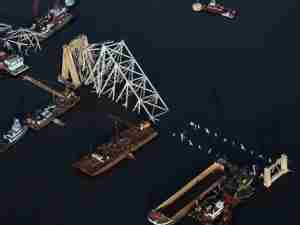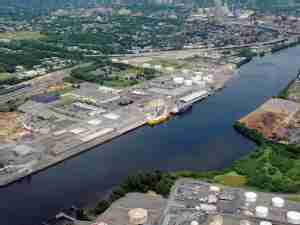A well-funded 2020 Master Plan – consisting of three-fold expansion of container capacity, state-of-the-art breakbulk terminals, and additional cruising capacity – topped Port of New Orleans President and CEO Gary LaGrange’s gaze into the future of the Crescent City’s maritime community today during the 22nd Annual State of the Port Address.
LaGrange began his address by taking a look back at what the Port was more than 20 years ago and where it will be beyond the next decade.
“Considering the Board of Commissioners of the Port of New Orleans is 112 years old and the Crescent Port Pilots are celebrating their 100-year anniversary, 22 years is a relative flash in the pan when it comes to the world of Ports,” LaGrange said. “In 1986 and today, we had completed a strategic plan for the Port that called for bold investments and forward thinking. Again in 2008, we have to be resourceful in finding new ways to meet our customers’ needs and create new economic opportunities for our City and State.”
LaGrange cited the City’s geographical advantage and natural resources as a prime force in moving Louisiana forward.
“We’ve realized firsthand in the last three years why our founding fathers broke ground here some 90 miles from Gulf of Mexico,” he said. “While Hurricane Katrina dealt the City a massive blow, the Port began working cargo just 12 days later. And just this month the Port was able to restart operations only 48 hours after Hurricane Gustav stormed ashore.”
LaGrange said the time is now to realize true investment in the Port of New Orleans.
“With the coming expansion of the Panama Canal and growing trade from emerging economies, the Port is well positioned to capture new cargoes, create thousands of jobs and provide robust economic opportunities for the region, state and nation,” LaGrange said. “It is my hope that we will build upon our strengths, secure the necessary funding for expansion, and begin a new, exciting era for the shipping industry in South Louisiana.”
In the coming years, LaGrange foresees:
- A Napoleon Avenue Container Terminal tripled in size with more than a dozen gantry cranes working cargo from new trade routes created by an expanded Panama Canal.
- Expanded break-bulk facilities more efficiently moving steel, natural rubber, forest products, metals and project cargoes.
- Additional cruising opportunities that attract new home-ported vessels to spur riverfront development and the tourism industry.
LaGrange cited the need for cooperation and commitment from elected officials and private industry to see the plan to fruition.
“To successfully reach these goals, we must cooperatively work to build upon our economic foundation,” he said.
LaGrange cited a Port legislative initiative to offer tax credits to Louisiana shippers who use Louisiana ports. For example, the Port of New Orleans handles more than 60 percent of all imports to Louisiana companies, but competing ports in neighboring states and on the East and West coasts garner small shares due to a myriad of economic conditions. A study conducted by LSU economist James Richardson found efforts to shift just 10 to 20 percent of the Louisiana cargo currently going through out-of-state ports would create more than 6,500 jobs and mean more than $1 billion in annual business activity and generate more than $25 million in state and local taxes.
“That’s just a start,” LaGrange said. “We also want to work hand-in-hand with economic development officials to attract regional distribution centers and new manufacturers to the state, all of which will result in new jobs and new opportunities for the entire maritime community.”









